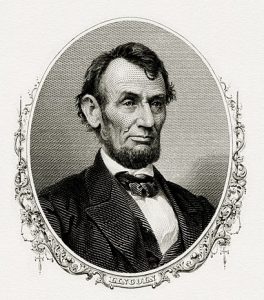Bill de Blasio couldn’t sleep. Of all the objections to his ban on the Central Park horses, one haunted him. Where do they go afterwards? He hoped a rich animal lover out West would put them up on a huge ranch to roam around for the rest of their natural lives. But short of that, how was he going to find dozens of stable owners willing to house and feed old horses?
And then there’s what Liam Neeson said about how the horses were actually happy doing their jobs. Would they be happy doing nothing on a farm? And what happens to the drivers after the mayor takes away their livelihood? The Post will have a field day with that.
And then the solution hit him. A gradual ban!
All the horses now giving rides in the park would be allowed to continue doing so for the rest of their lives but no new horses could replace them. A gradual process of attrition through death, sickness, and injury would eventually eliminate horses in Central Park. After the American Revolution, New York State did something similar with slavery. Boys born to slave women after July 4, 1799 were set free when they reached 28 years of age; females at 25. Slaves born before that date remained slaves until death. It was a compromise plan called Gradual Emancipation. Given a new popular commitment to freedom after the revolution it was the best deal the slave owners could get. Some even liked it because it increased the value of their existing slaves.
To sweeten the pot for the horse owners and drivers De Blasio allowed them to charge whatever they wanted for a ride. As the years went by and the number of horses declined, more and more tourists flocked to Central Park South to bid on a ride. Lucky drivers with long-lasting horses wound up making enough money to retire. Owners now had a real incentive to keep the remaining horses going as long as possible and hired staffs of veterinarians to monitor them 24/7.
When the number of horses dropped to single digits, the price of a ride skyrocketed. Online bookmakers began taking bets on the final horse. Souvenir sellers lined Central Park South hawking t-shirts that read Team Dapple, Team Honey Bee. Network morning shows featured segments on horses and their drivers. Owners auctioned sponsorship rights and covered the horses and carriages with corporate logos. A bestselling children’s book “Bessie the Central Park Mare” made a ride on Bessie a must for tourists with children – until she collapsed on the West Drive. Mounted police had to be brought in to clear the massive crowd taking selfies with Bessie’s carcass.
When it got down to the final three, it became the ultimate horse race. People began paying thousands to ride what might be the last horse in Central Park. Owning the winning horse meant no limit on what the owner could charge. Who wouldn’t want to tell their grandchildren that they took the final carriage ride in Central Park? Goldman Sachs had a team of equine experts examine the remaining three horses and bought Shamus for $2 million. They bet wrong.
Now that it was down to Mable and Missy May, crowds began trailing the horses as they lumbered around the drive. One summer day Missy May keeled over in the middle of a ride. Tourists disassembled her harness and started on the carriage while others rushed over to Mable who was taking a rest on Central Park South. A furious bidding war erupted for a ride on the last horse standing.
The winner was a father with two young daughters and $10,000 to spare. The losers followed close behind. Someone jumped on the carriage and was quickly joined by others. One of the freeloaders shoved the driver to the road and took up the reigns. A guy vaulted onto Mable’s back, followed by another and another until the old mare was crushed under their weight. Seeing that the last horse was now dead, a prepared young woman pulled out a pair of scissors and began sniping at Mable’s mane. Someone ripped off an ear. A kid with a switchblade sawed off the tail. But it was the bones that would really be worth something. The woman with the scissors made the first gash. After that, a frenzy of clawing fingers reduced Mable to a pile of sinew, guts and muscle. Tourists splattered with blood and fur began taking bids from the latecomers. “I got a hoof here!” …“Leg bone — still warm!”
David Eisenbach teaches presidential history at Columbia University. His latest book One Nation Under Sex: How the Private Lives of Presidents, First Ladies and Their Lovers Changed the Course of American History was co-authored with Larry Flynt. He lives in New York City.





Be First to Comment